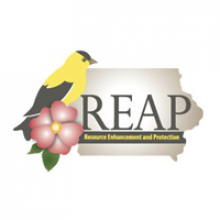Geology Teacher's Guide
When you picture the landscape of Iowa, you might think of lots of flat farmland and a few hills. Actually, Iowa's land has many different areas and features. Did you know there are fossils in Iowa? How about caves? Learn about Iowa's interesting geology and ancient past by virtually exploring various land features and fossilized creatures.
Iowa Core Standards
Science (Grades 3 and 4)
- 4-ESS2-1 Make observations and/or measurements to provide evidence of the effects of weathering or the rate of erosion by water, ice, wind or vegetation.
- 3-LS4-1 Analyze and interpret data from fossils to provide evidence of the organisms and the environments in which they lived long ago.
Discussion Questions
- What does Iowa’s surface look like?
- Why does Iowa have the surface landform features that it has?
- Do other places look the same or different from Iowa? What caused those places to look the way they do?
- What are the geologic processes currently impacting Iowa’s surface?
- What will Iowa look like in the future?
- What do the layers in the rock tell us about Iowa?
- How do the fossils we find help us know what Iowa was like millions of years ago?
Suggested Activities
- Cartesian Diver Activity (Iowa PBS): This activity serves as an extension of the materials on fossils and Iowa’s geology. The trip to Graf, Iowa, investigated a layer of fossils found in a rock outcrop. These unique fossils are known as nautiloid cephalopods and are ancient relatives to modern-day squid and nautiluses.
- Soil Erosion Experiments (USDA): Find out how erosion works. Erosion is the process where soil is displaced to another location through movement caused by water, wind, and/or ice. Some of the greatest natural wonders of the U.S. including the Grand Canyon, Natural Bridges National Monument, and Devil's Tower were carved and transformed in part by erosion and deposition of soil over time.
Additional Resources
What is Geology?
- Managing Carbon Dioxide: The Geologic Solution — Reservoir Geology 101 Fluid in the Rocks (PBS LearningMedia): The basic components of geologic formations are described.
- Geology: What Forces Shape Your World? | Science Trek (PBS LearningMedia, Idaho Public Television): Geology plays an essential part in our lives. Geologists help us with everyday things and they keep us safe by studying the land around us. Find out more in this geological adventure. This resource is part of the Science Trek collection .
- Rocks and Minerals | Science Trek (PBS LearningMedia, Idaho Public Television): There are three types of rocks — igneous, sedimentary and metamorphic — that have formed over time in the Earth's different layers. A rock can begin as one type and can change many times. It can take thousands of years for rocks to weather and erode. This process of changing is called the rock cycle. This resource is part of the Science Trek collection .
The Geology of the United States
- The Geology of Iowa's Gitchie Manitou State Preserve | Iowa Land and Sky (PBS LearningMedia, Iowa PBS): Gitchie Manitou State Preserve, a small patch of natural prairie in northwest Iowa, ishome to Sioux quartzite outcroppings, the oldest surface bedrock in Iowa. This resource is part of Iowa Land and Sky collection.
- Geology and Mountains | Georgia Outdoors (PBS LearningMedia, Georgia Public Broadcasting): Meet with a geologist in the north Georgia mountains for a discussion of Pangea, the evolving formation of earth's continents, and the layering of rock as a result of continents colliding, in this excerpt from Georgia Outdoors.
Products Made with Minerals
- Geology: The Connection Between Geology and Toothpaste | Science Trek (PBS LearningMedia, Idaho Public Television): We see the work of geologists all around us. They find minerals that are used in products all around us. Find out how these scientists make a difference in our everyday lives. This resource is part of the Science Trek collection.
Career
- Planetary Geology | NASA Planetary Sciences (PBS LearningMedia, NASA): Meet NASA scientist Lynn Carter, who studies the geology of planetary surfaces, in this video adapted from NASA's Goddard Space Science Center. Carter describes how scientists learn about Earth by studying other planets and moons. This resource is part of the NASA Planetary Sciences collection.
- Dana Ulmer-Scholle, Geologist (PBS LearningMedia, New Mexico PBS): Dr. Dana Ulmer-Scholle is a senior research scientist in research and economic development at New Mexico Tech. She answers the question, "Why did you become a scientist?" This resource is part of the Why Did I Become a Scientist? collection.
- Scientist Profile: Marine Geologist (PBS LearningMedia, Twin Cities PBS): This DragonflyTV segment introduces marine geologist Carol Reiss, who works for the U.S. Geological Survey (USGS). She studies tectonic plate movement in order to better understand earthquakes. This resource is also available in Spanish. This resource is part of the DragonflyTV collection.
Support for FIND Iowa Provided By



